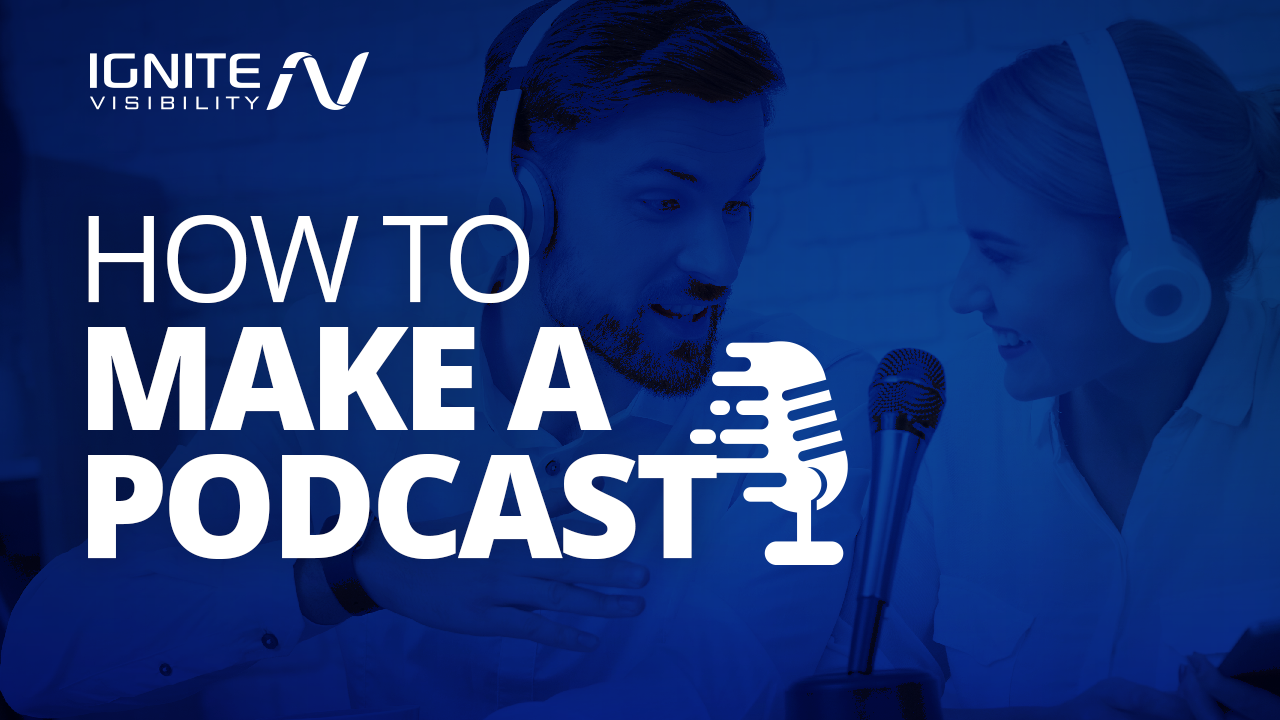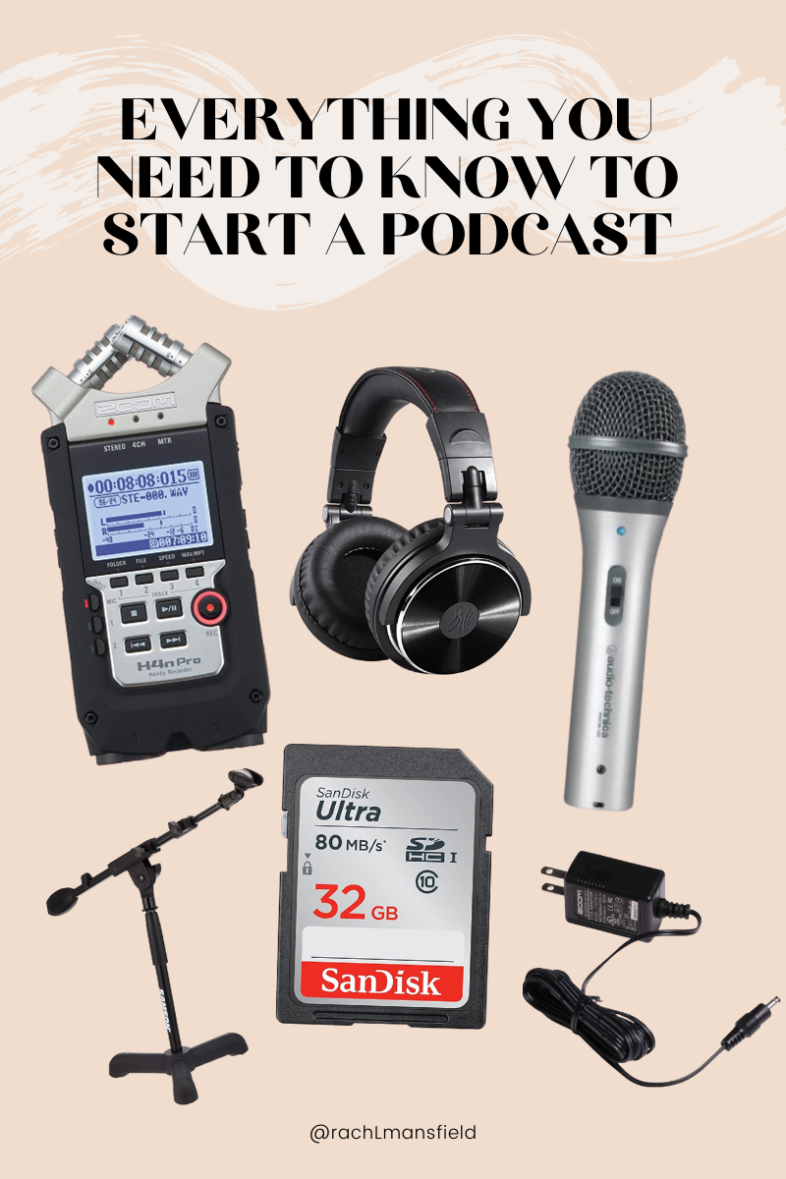3. Setup podcast recording equipment
by Admin
Posted on 05-07-2023 10:09 PM

Audio quality is important but it doesn’t have to cost a ton to get a good quality microphone for podcasting. One of the most popular podcasting microphones is the audio-technica atr2100x-usb. It’s both a usb microphone and has an xlr connection which lets you upgrade your recording equipment without needing a new mic.
 I recommend taking a look at our podcast starter kit post for more options here, especially if you plan on having a co-host or two.
I recommend taking a look at our podcast starter kit post for more options here, especially if you plan on having a co-host or two.
For first time podcasters, it may come as a shock that you can’t just fire up your laptop and record into your headset. A good podcast needs good audio equipment to achieve a professional sound quality that will be easy to listen to. The best content in the world won’t be heard by anyone if it’s too faint, too loud, cuts out all the time, or has constant background noise. However, there’s no need to break the bank on podcasting equipment. Check out this comprehensive rundown of the equipment you need. For example, if you’re planning a smaller, modest podcast, you may be able to compromise on sound quality by recording on your iphone with a compatible plug-in microphone. https://7sl.s3-web.jp-tok.cloud-object-storage.appdomain.cloud/bestbusinessideas/
Microphone stands come in a lot of different styles, and can help keep your microphone secure while recording your podcast. You may prefer a tripod , tabletop , boom arm , or shockmount depending on your budget and setup.https://7sl.s3-web.jp-tok.cloud-object-storage.appdomain.cloud/bestbusinessideas/
There are a few factors to consider when you get started with your episodes. First, you’ll need to evaluate topic ideas, find quality recording equipment, and choose beginner-friendly editing software. Additionally, one of the best ways to grow your audience organically is to invite podcast guests. Therefore, you might create a list of current influencers in your niche that already have strong followings, and try to recruit them as interviewees. Alternatively, you can reach out to thought leaders who can provide an expert opinion: it’s also important to optimize your episodes to make them more discoverable. You can use a tool like google keyword planner to identify relevant keywords.
4. Choose your podcast software
In this section, we’ll briefly highlight the podcast equipment and audio software you’ll need when you’re learning how to start a podcast. The bare minimum you’ll need to spend money on is a microphone, which can be cheap depending on what you choose. You may purchase an xlr microphone (xlr is a type of electrical connector, mostly used on professional audio equipment) that connects to a mixer, which can give you high-quality sound.
 However, the audio quality offered by a good usb microphone works just as well for most people.
However, the audio quality offered by a good usb microphone works just as well for most people.
A podcast hosting platform is a software that you can use to manage and upload your podcasts. The platform will then upload your podcast to all the major distribution channels (spotify, apple, google, stitcher, etc. ) so you don’t need to manually do this. i think every podcaster should be using a hosting service as it makes the management of your podcast so much more efficient and also provides podcast data. There are plenty of podcast hosting platforms out there and they vary in offerings so you should choose one based on what’s valuable to you (storage, number of listeners, number of episodes, extensive analytics, etc.
The complete guide to podcasting for business - riverside. Fm how to edit a zoom recording (quick & easy) - riverside. Fm b-roll guide: definition & how to use it for video content the 8 best streaming software for online creators (2023) the best side-by-side video app to record your interviews 14 best dslr microphones & how to choose a camera mic how to record zoom meetings with or without permission how to record a google meet on any device (quick & easy) how to cite a podcast in apa, mla, chicago & harvard style how to record a podcast with multiple mics buzzsprout review: the podcast hosting platform's pros & cons.
Of course, your podcast and its quality will also be impacted by the equipment you choose to use. Indeed, less-than-stellar podcast equipment can make your show painful or uninspiring to listen to, while high-quality equipment will have the reverse, positive effect. You don’t have to break the bank to get good quality equipment, fortunately. For example: choose a good dynamic or condenser microphone. Dynamic microphones are usually ideal for podcasting, as they have less sensitivity to ambient noise in your environment take a good pair of headsets so you can hear yourself and ensure sound quality is good during any given episode be sure to use podcasting software and a full pc setup so you always have access to key information about the podcast, mix, etc.
5. Record your first episode
Once you have everything ready, it’s time to record and edit the episodes. Here are the steps:.
Creating an outline will help you map out what you’re going to say. You don’t have to go so far as to create a script. Here’s a sample outline you can use: episode intro: 30 to 60 seconds map out topics you will cover: about 4 minutes each add talking points for each topic closing remarks: 2 minutes closing music: 30 seconds when you start recording, you might make a mistake: an interruption in the background or you mispronounce a word. Whatever the case, it’s best to record the whole episode without stopping. You can make edits later. If you do interviews or have co-hosts, it’s best to record everyone on an individual track.
No matter how good your recording is, there is no substitute for great podcast content and a confident performance. Your podcast can’t just sound great, it needs to be worth listening to. A key to making this happen is creating an outline. Unless your podcast is meant to be scripted, you don’t need to script the entire show. You just need to create an outline based on the transformation you want your audience to have. Start with the end in mind. What’s the purpose of this episode? what’s the take away that you want your listeners to have? picturing your listener avatar while creating an outline can be incredibly helpful.
No matter which of the below elements are included, all the best podcast intros are short (30-60 seconds max). Furthermore, they are unique to each episode and tell listeners who you are, what your podcast is about, and why they should listen. "scripts are another way to prepare and another way to take the stress out of things. There's enough to worry about when you're recording. I don't want to be improvising my lines when it comes to record. Depending on the show and the organization, there might be a review process, there might be engineers or co-hosts or guests, and i don't want to waste their time.
For the most part, all you really need to do to record your podcast is plug your microphone into your computer, open your audio recording software, hit record, and start talking. Again, make sure everything is working properly before you sit down to record a full episode. It’s ok if you’re nervous the first time. It’s normal, and with time, you will become more comfortable. In fact, several podcasters i met recorded several test episodes that have never seen the light of day just so they could get used to being behind the microphone. Another thing that may help calm your nerves is the realization that you can edit it.
The editing and production process of making a process is often the biggest hurdle for new podcasters. This might be your first introduction to audio editing, which has a steep learning curve, so it’s best to start soon. Here are our top editing tips for newcomers and have a detailed video tutorial on how to edit using audacity.
Once you’ve got your raw audio, now it’s time to turn it into an amazing podcast! the editing and production side is usually the most technical and time consuming part of podcasting. Unsurprisingly, it’s the part that most people outsource. Producing the podcast can include: reviewing the transcript of the raw recording and make editorial decisions editing multiple sections together with smooth transitions editing out the speaker stumbles, umms and ahhs, etc removing background noise creating consistent levels (volume) between speakers and music adding intro/theme music and voiceovers final mixing and mastering the time required for editing and producing an episode depends on the number and length of the raw recordings, finished episode length, format (ie 1:1 interview, narrative style etc), and approval process.
You don’t need a professional studio with fancy equipment to record a podcast. All that’s required is a laptop or tablet, audio recording and editing software, and a high-quality microphone to record the audio.